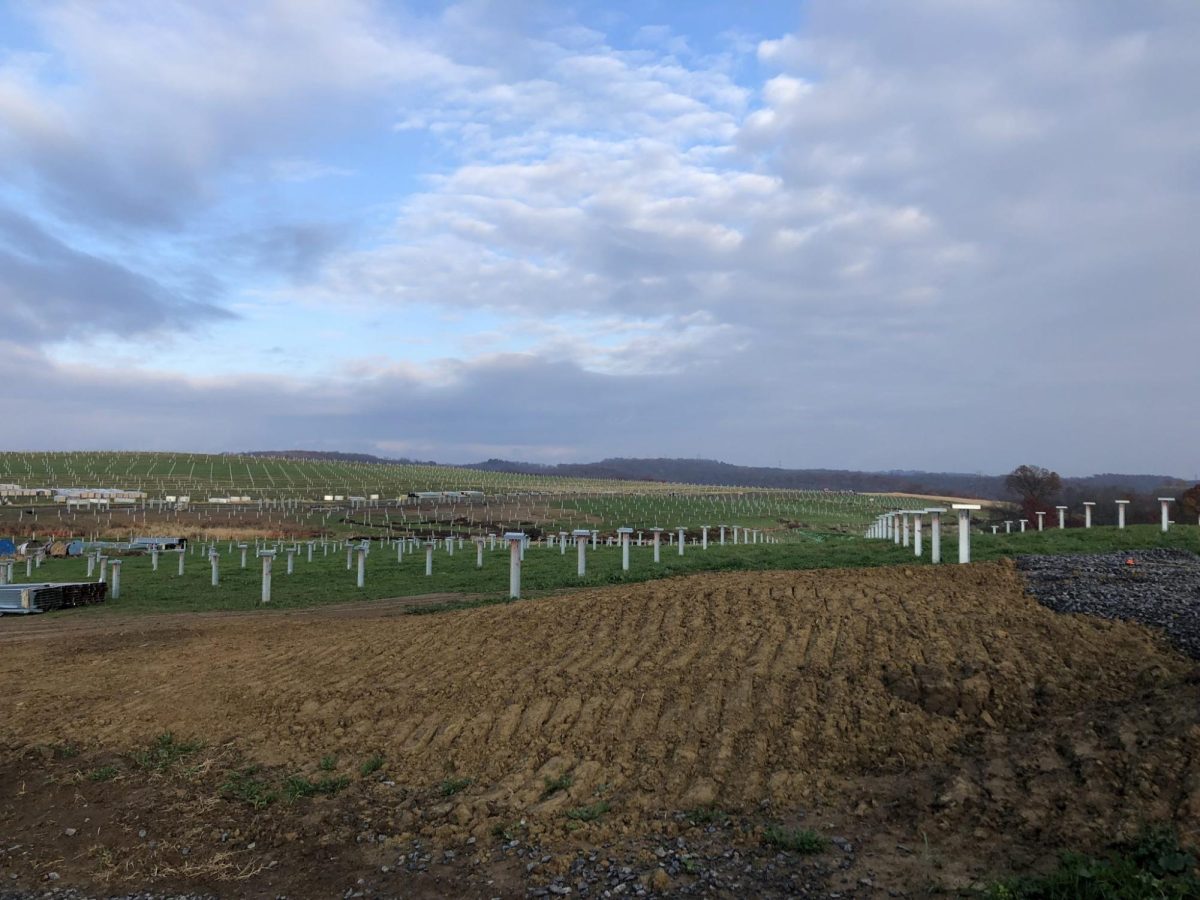Pitt and Vesper Energy cut the ribbon on the largest solar farm in southwestern Pennsylvania earlier this month, one of the University’s biggest strides towards achieving carbon neutrality.
The 68-acre Gaucho Solar project located near the Pittsburgh International Airport is a joint project between Pitt and Vesper Energy — a sustainable energy company — that will solely supply energy to the university for the next 20 years. Completed on Aug. 16, the Gaucho Solar project will meet 18% of the Oakland campus’s energy needs, according to Aurora Sharrard, Pitt’s director of sustainability.
“In Pittsburgh, solar makes a lot of sense financially and electrically,” Sharrard said. “The push to shift to lower carbon fuel sources is something that we all need to do globally to combat climate change. So there’s really no question of whether. It’s just how and how fast.”
Sharrard said the Gaucho Solar project will produce roughly 35,700 megawatt-hours per year. The sustainable energy supply from the Gaucho Solar project will lower Pitt’s greenhouse gas emissions by 15,452 metric tons of carbon dioxide per year — the equivalent of taking 3,330 fuel-burning cars off the road, according to Sharrard.
In 2018, Pitt publicly pledged it would be carbon neutral by 2037 and released the Pitt Climate Action Plan in March 2022. Sharrard said the plan details the strategies and expected timelines toward reaching carbon neutrality.
Sharrard said the Gaucho Solar project is a large advancement on the Pitt Climate Action Plan, but noted the plan is “only meant to be a five-year document” and Pitt may adjust the timeline to accommodate unexpected progress and shortfalls.
“It’s our intention to update it every five years as an institution knowing that we will advance on certain strategies faster or slower,” Sharrard said. “And new strategies and technologies will come into play as we get closer to 2037.”
Vesper Energy broke ground on the Gaucho Solar project in 2022 — four years after Pitt signed a 20-year power purchase agreement with the company which secured the university rights to all power output from the completed solar farm, according to Sharrard.
Sharrard said when Pitt entered the power purchase agreement, it locked in power prices — which are otherwise susceptible to market fluxes — for the next 20 years. She said this will “dramatically reduce” Pitt’s expenditures on energy as opposed to shorter-term agreements.
“The cost of locking in power prices over a long period of time saves the University money in the long term,” Sharrard said. “And locking in solar power specifically, dramatically reduces our costs over the next 20 years compared to market rates today and definitely in the future.”
The total cost of the project is “confidential,” Juan Suarez, Vesper Energy’s VP and Chief Development Officer, told The Pitt News over email. He said Pitt did not pay for the construction of the Gaucho Solar project, only the energy it would produce.
Suarez said the project needed cooperation on the local, state and federal levels “to be successful” and noted that solar is a reliable, low-cost energy source.
“Utility-scale solar and renewable projects more broadly will continue to become a more common method by which campuses secure their energy needs,” Suarez said.
Brandon Grainger, the director of Pitt’s Electric Power Systems Lab, said solar panels work by converting photons from the sun into electrons to generate electricity. The use of the technology has been on the rise in the U.S. for the past several years, but Grainger said it does have problems.
According to Grainger, geographic limitations, temperamental cloud cover and even bird feces blocking sunlight are all obstacles to implementing large-scale solar power. Instead of exclusively using solar, he said an effective, sustainable power grid implements a range of energy sources.
“What I always encourage people with is, you need a diversity of power generation sources,” Grainger said. “It’s like for us to run a grid on 100% renewables for a country as big as the U.S. is — that’s never going to happen.”
But he noted that the technology is a linchpin in Pitt’s — and the country’s — efforts towards carbon neutrality.
“That’s what the whole point of solar is meant to do,” Grainger said. “It’s solar, wind turbines, all that stuff, so you’re not burning coal and you’re using just freely available resources.”
Allyson Frantz, president of Epsilon Eta Delta, a professional environmental science fraternity, said she transferred to Pitt in her second year because of the university’s opportunities for students to engage in its various sustainability initiatives.
“There was a lot of engagement on the sustainability front, and so that actually was a very appealing aspect of me applying to Pitt and then deciding to transfer here,” Frantz, a fourth-year environmental studies major, said.
Frantz said with the completion of the Gaucho Solar project, she feels better turning on a light switch in a Pitt building knowing that it’s powered, in part, by a sustainable source.
“I think having this completed is an actionable first step for us,” Frantz said. “And I think it encourages the faculty as well as students to continue doing more work.”



